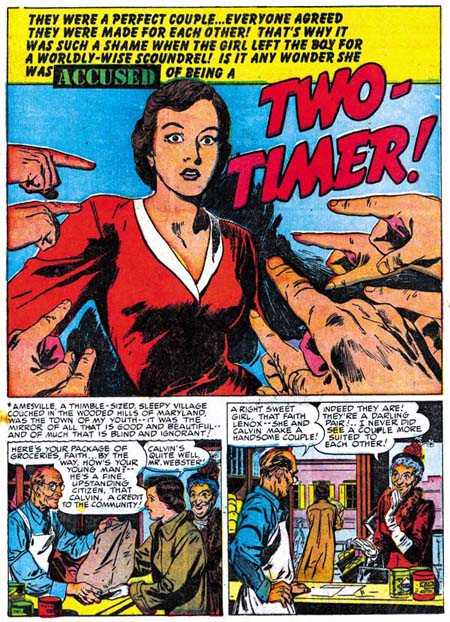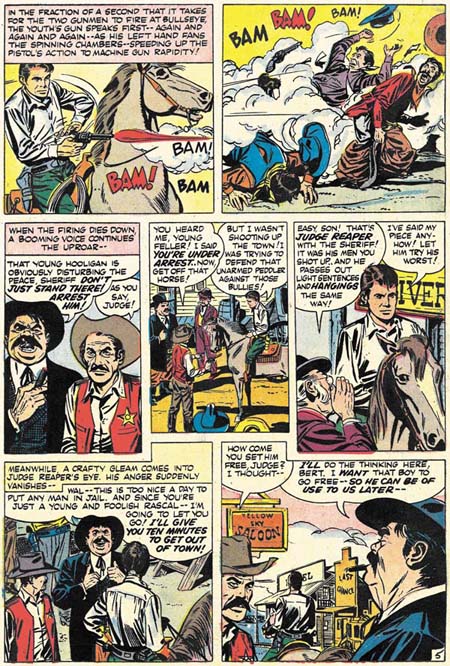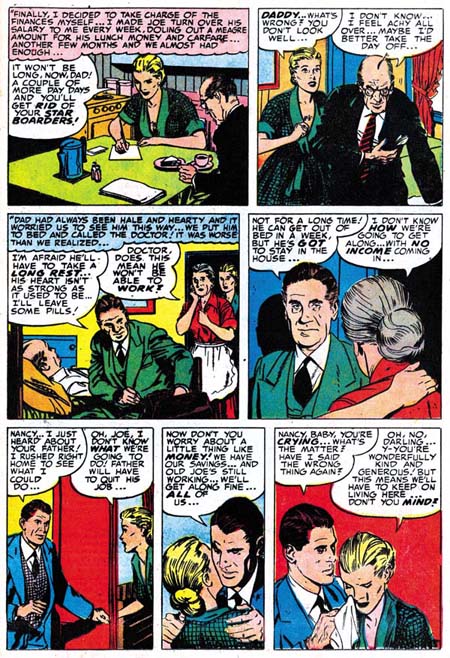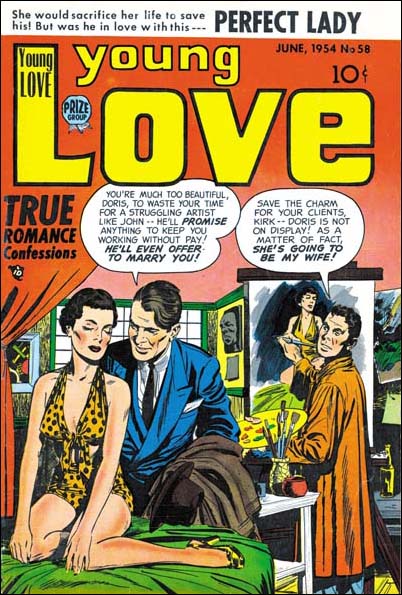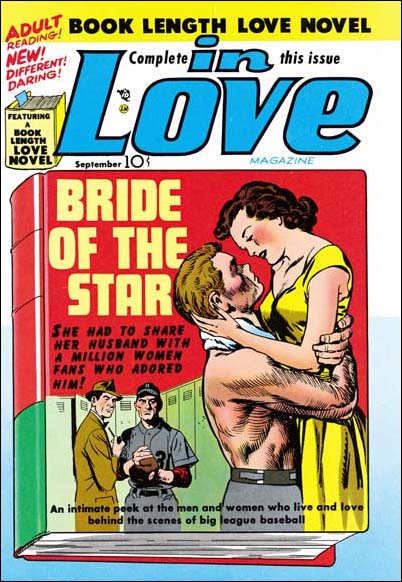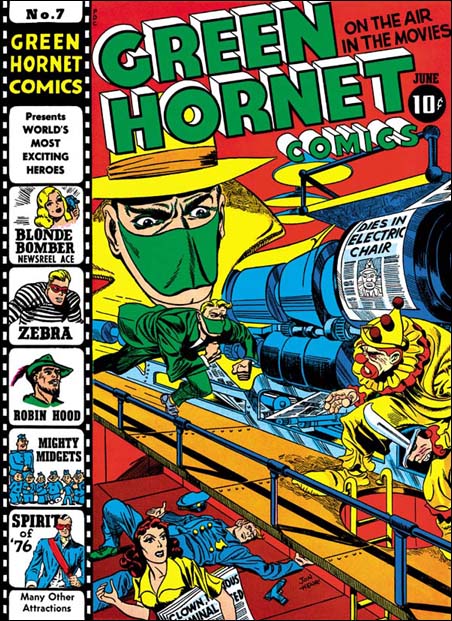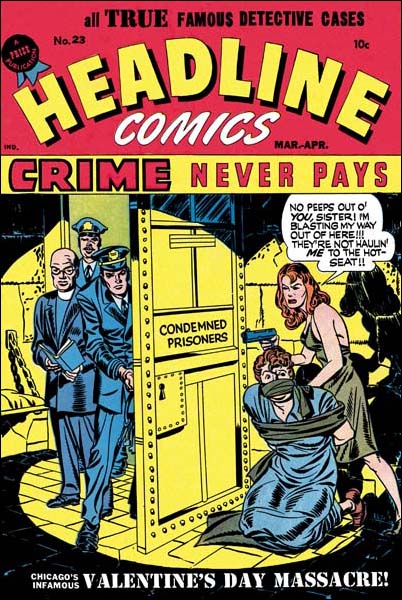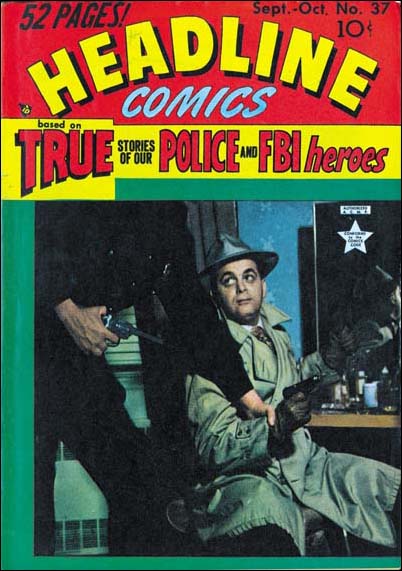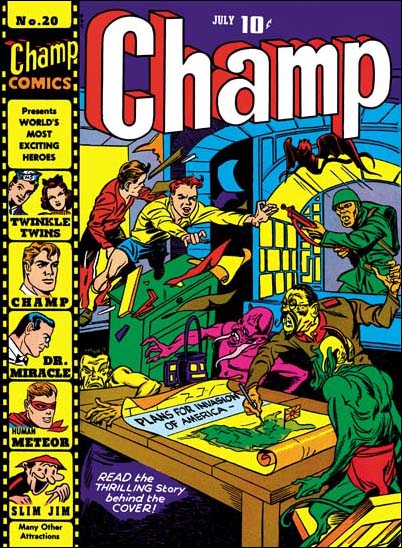After Joe Simon returned from war service, the S&K team made a deal with Harvey Comics to produce “Stuntman” and “Boy Explorers” comics. I previously discussed the part played in these comics by Bill Draut and Ken Riley who worked on backup stories. Now I would like to go into the work done on these comics by our intrepid artist, Jack Kirby. Not surprisingly, Jack’s efforts was the core of these comics as he the penciler for Stuntman and Boy Explorers stories and covers.
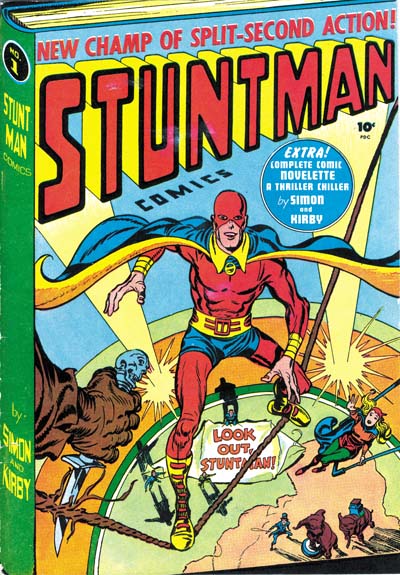
Stuntman #1, April 1946
Stuntman was published first on April 1946. It has three Stuntman stories with a total of 35 pages. The first story (“Killer In The Big Top”) introduces the characters. The hero is Fred Drake, who is both a movie stuntman and the crime fighting Stuntman. Like many S&K heroes, he really isn’t a super-hero since he has no special powers. But he does wear a costume and maintain a secret identity. As so common in comics, nobody seems able to make the obvious connection between the hero Stuntman and Drake the stuntman. Drake doubles for the famous movie star Don Daring. The two are spitting images of one another, except Don wears a moustache. Don takes on the comic relief roll. Besides being a vain actor, he periodically puts on a Sherlock Holmes outfit and tries to be the detective and solve the crimes. But his detective attempts come off as the acts of a buffoon, while it is the Stuntman the real man of physical action who saves the day. The love interest is the actress Sandra Sylvan. But calling her the love interest is a little misleading. There certainly is an interest by Sandra in the hero Stuntman, but he in turn always manages to escape her advances.
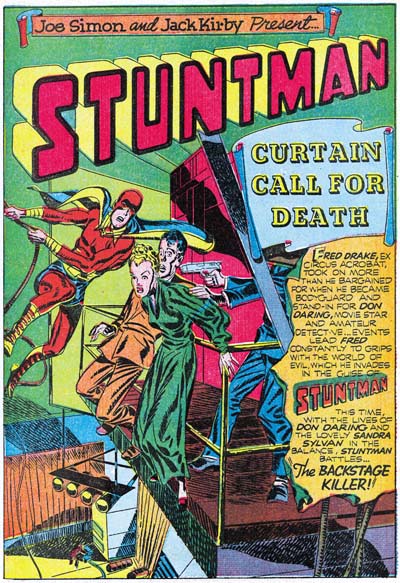
Stuntman #2, June 1946, “Curtain Call For Death”
These stuntman stories seem pure Kirby, with the sort of quick action that Jack seems to excel at. Story lengths of 10 to 13 pages also seem the perfect length for this type of plot. Was it the fact that S&K were no longer limited by publishers like DC, or maybe they had matured as comic artists during the time they spent in wartime service. Whatever the reason Simon and Kirby were now at their peak. This peak would last for about ten years and would produce work unmatched by anyone else. It would take a collaboration between Stan Lee and Jack Kirby to match it.
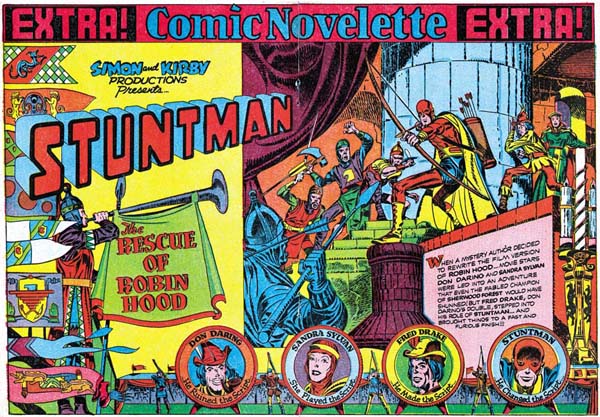
Stuntman #2, June 1946, “The Rescue of Robin Hood”
One sign that Kirby wasn’t “pulling any punches” on Stuntman was the return of the double page splash. This layout device was once an important part of S&K work on Captain America, but it was infrequently used during S&K years at DC. But the double spread would return for each Stuntman issue. But only too complete Stuntman comics would be published. A completed double page splash meant for Stuntman #3 would not see print. There was a fourth double spread apparently just in the middle of being ink when work was abruptly terminated. Stuntman is completely inked, other figures partially done and another still in the outline form.
As previously mentioned, Stuntman and Boy Explorers were caught in a post-war comic book glut. With the end of paper rationing, publishers and printers went wild and an over abundance of comic books hit the newstands. It was just too much, many comics would be returned without ever having been put on the racks. New comics like Stuntman didn’t get much of a chance. Only two issues of Stuntman were distributed. A third issue was sent to subscribers but it was one fourth the size of a normal comic, printed without colors, and was short in page count. Completed but as yet used work would eventually be put in Green Hornet Comics about a year later. Even so there maybe two Stuntman stories that have never been published. Unfortunately it appears that the art work for these stories is no longer together.
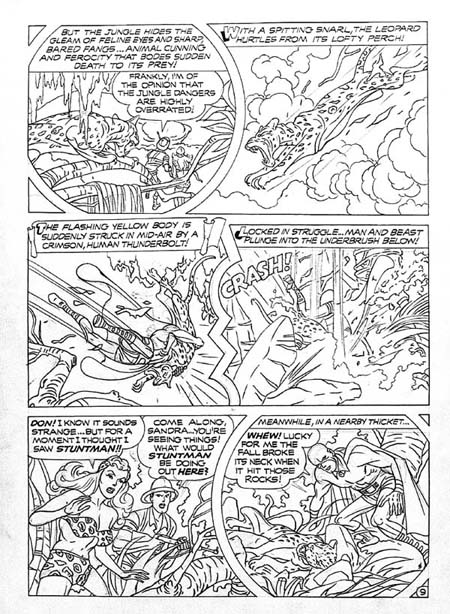
Unpublished Stuntman
All the Stuntman stories that had been made all seem a pretty coherent group. However an ad in Stuntman #2 announced the coming of Stuntgirl and Stuntboy. I suspect that Sandra Sylvan would become Stuntgirl, but I have no idea where the boy would come from. Frankly it is hard to imagine how stories with this threesome would be like. Unfortunately we will never know.

Stuntman #2, June 1946


